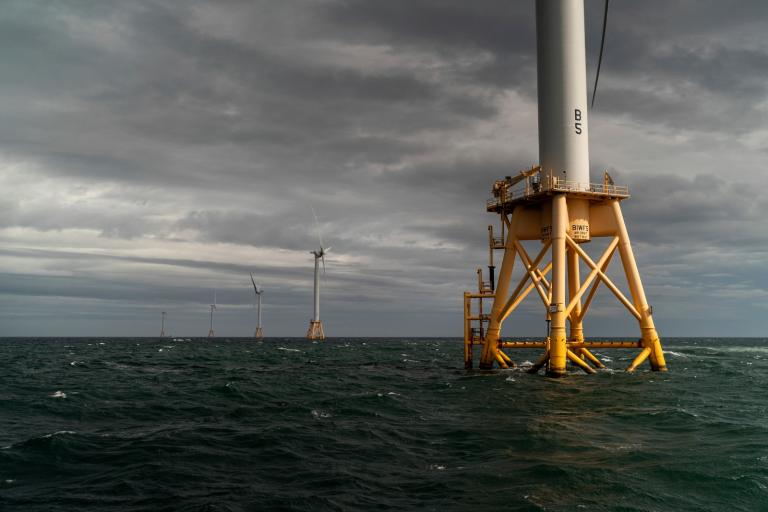 Last week, the Obama administration gave what may be its first formal statement favoring hydraulic fracturing, or fracking, of natural gas, in a report called Investing in America: Building an Economy That Last [PDF]. Until now, the Environmental Protection Agency has, generally, been moving slowly on the issue, with initial study results due out this year and a final report due in 2014. However, the Investing in America report endorses the “safe and environmentally responsible” extraction of natural gas.
Last week, the Obama administration gave what may be its first formal statement favoring hydraulic fracturing, or fracking, of natural gas, in a report called Investing in America: Building an Economy That Last [PDF]. Until now, the Environmental Protection Agency has, generally, been moving slowly on the issue, with initial study results due out this year and a final report due in 2014. However, the Investing in America report endorses the “safe and environmentally responsible” extraction of natural gas.
Key paragraphs:
Since the mid‐2000s … the discovery of new natural gas reserves, such as the Marcellus Shale, and the development of hydraulic fracturing techniques to extract natural gas from these reserves has led to rapidly growing domestic production and relatively low domestic prices for households and downstream industrial users. Appropriate care must to be taken to ensure that America’s natural resources are extracted in a safe and environmentally responsible manner with the safeguards in place to protect public health and safety. Provided these precautions are taken, the potential benefits to the U.S. economy are substantial.
Of the major fossil fuels, natural gas is the cleanest and least carbon‐intensive for electric power generation. By keeping domestic energy costs relatively low, this resource also supports energy intensive manufacturing in the United States. In fact, companies like Dow Chemical and Westlake Chemical have announced intentions to make major investments in new facilities over the next several years. In addition, firms that provide equipment for shale gas production have announced major investments in the U.S., including Vallourec’s $650 million plant for steel pipes in Ohio.
An abundant local supply will translate into relatively low costs for the industries that use natural gas as an input. Expansion in these industries, including industrial chemicals and fertilizers, will boost investment and exports in the coming years, generating new jobs. In the longer run, the scale of America’s natural gas endowment appears to be sufficiently large that exports of natural gas to other major markets could be economically viable.
Obama’s jobs panel will also call for an “all-in,” aka “all of the above,” energy strategy: “The Jobs Council recommends expanding and expediting the domestic production of fossil fuels — including allowing more access to oil, gas, and coal opportunities on federal lands — while ensuring safe and responsible development of those sites.”
The Obama administration seems to have bought the mythos of abundant shale gas — a mythos that has completely shoved aside all discussions of peak oil. Remember peak oil, the idea that we would eventually (i.e., in 2006) peak our ability to extract oil? Smart peak-oil folk spoke knowledgeably about proven and probable reserves and predicted that, sooner or later, oil would become too expensive to extract. That meme is being replaced by a new one: Thanks to fracking and other technologies, we have an abundance of shale gas, shale oil, and other relatively hard-to-extract, costly-to-extract products. And they’re sitting under American soils. A sampling of stories: David Brooks, in The New York Times, on the shale gas revolution; The Wall Street Journal on oil and gas bubbling up all over (“You’ll know the U.S. energy industry is really on the rebound when North Dakota’s newfangled Bakken oil field starts pumping more crude than Alaska’s stalwart Prudhoe Bay. Energy experts expect it to happen in 2012”); and Nathan Myhrvold, in Bloomberg, on the energy revolution that keeps carbon on top:
The new resources are so vast that they would last for a century at current rates of gas consumption. And this cheap form of energy isn’t under the control of a foreign dictator, stuck in the Arctic or submerged miles below the sea — it lies in the farmlands of New York, Pennsylvania and Texas.
A lengthy discussion of each potential problem with natural gas fracking would be, well, lengthy. Suffice it to say that academics dispute whether shale gas is cleaner than coal; a glut of natural gas is deterring wind investment; according to the EPA, state regulations don’t go far enough to protect workers and water; fracking chemicals have been detected in a Wyoming aquifer; and fracking has been implicated in cow deaths, earthquakes, and most recently an oil well blowout.
At least one observer hasn’t bought the hype. Chris Nelder, a peak-oil expert, asks “What the frack?” and concludes that talk of a 100-year supply of natural gas in the U.S. is grossly exaggerated:
Assuming that the United States continues to use about 24 [trillion cubic feet] per annum, then, only an 11-year supply of natural gas is certain. The other 89 years’ worth has not yet been shown to exist or to be recoverable. …
Natural-gas proponents aren’t advocating current rates of consumption, however. They would like to see more than 2 million 18-wheelers converted to natural gas, in order to reduce our dependence on oil imports from unfriendly countries. They also advocate switching a substantial part of our power generation from coal to gas, in order to reduce carbon emissions. … yet those same advocates never adjust their years of supply estimates accordingly.
Rep. Ed Markey (D-Mass.) queries why America is rushing to export natural gas, focusing both on the cost of energy and the role of natural gas as an alleged bridge fuel in reducing carbon emissions.
Natural gas can’t be separated from oil — about a quarter of natural gas comes from oil wells, and the price glut is partly because, with oil at $100 a barrel, oil companies have every incentive to keep drilling for both.
We’re at the beginning of an American natural gas boom/glut/bubble. The Obama administration seems to be making an awfully big assumption that shale gas can be extracted in a safe and environmentally responsible manner, and it’s presumptuous to be pushing shale gas as an investment in America before the EPA weighs in.



